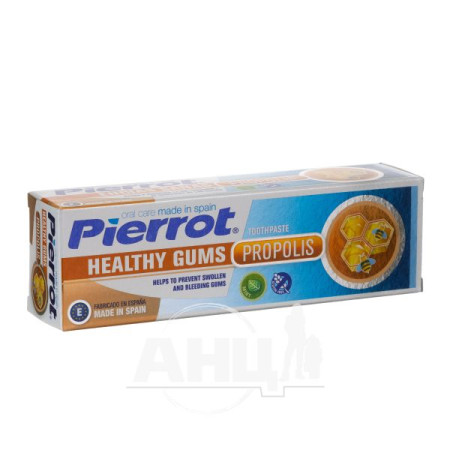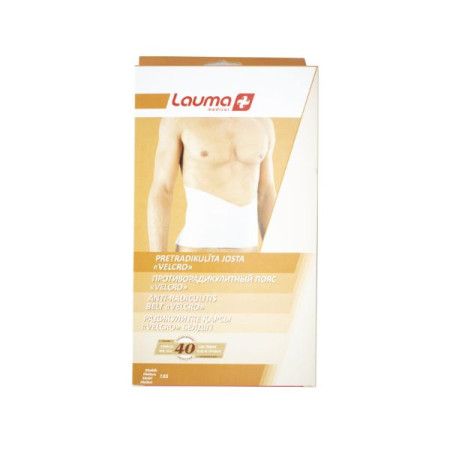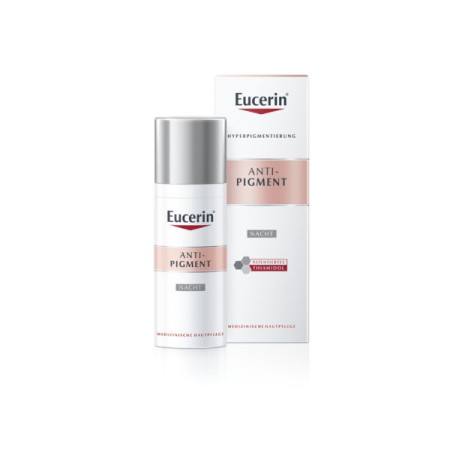Cavinton forte tablets 10 mg No. 90

Instructions for Cavinton forte tablets 10 mg No. 90
Composition
active ingredient: vinpocetine;
1 tablet contains 10 mg of vinpocetine;
excipients: magnesium stearate; colloidal anhydrous silicon dioxide; talc; lactose monohydrate; corn starch.
Dosage form
Pills.
Main physicochemical properties: white or almost white flat, round tablets with a bevel, with a diameter of about 8.0 mm with the inscription "10 mg" on one side and a score on the other.
Pharmacotherapeutic group
Psychostimulants and nootropics. Vinpocetine.
ATX code N06B X18.
Pharmacological properties
Pharmacodynamics
Vinpocetine is a compound with a complex mechanism of action that favorably affects metabolism in the brain and improves its blood supply, as well as improves the rheological properties of blood.
Vinpocetine exhibits neuroprotective effects: the drug attenuates the harmful effects of cytotoxic reactions caused by stimulating amino acids. The drug inhibits voltage-gated Na+ and Ca2+ channels, as well as NMDA and AMPA receptors. The drug enhances the neuroprotective effect of adenosine.
Vinpocetine stimulates cerebral metabolism: the drug increases the uptake of glucose and O2 and the consumption of these substances by brain tissue. The drug increases the brain's resistance to hypoxia; increases the transport of glucose - the exclusive source of energy for the brain - through the blood-brain barrier; shifts glucose metabolism towards the energetically more favorable aerobic pathway; selectively inhibits the Ca2+-calmodulin-dependent enzyme cGMP-phosphodiesterase (PDE); increases the level of cAMP and cGMP in the brain. The drug increases the concentration of ATP and the ATP/AMP ratio; enhances the metabolism of noradrenaline and serotonin in the brain; stimulates the ascending noradrenergic system; has antioxidant activity, as a result of all the above effects, vinpocetine has a cerebroprotective effect.
Vinpocetine improves microcirculation in the brain: the drug inhibits platelet aggregation, reduces pathologically increased blood viscosity, increases the ability of erythrocytes to deform and inhibits adenosine uptake; improves O2 transport in tissues by reducing the affinity of O2 for erythrocytes.
Vinpocetine selectively increases blood flow in the brain: the drug increases the cerebral fraction of cardiac output; reduces vascular resistance in the brain without affecting the parameters of systemic circulation (blood pressure, cardiac output, pulse rate, total peripheral resistance); the drug does not cause a "stealing effect". Moreover, taking the drug improves blood flow to damaged (but not yet necrotic) areas of ischemia with low perfusion ("reverse steal effect").
Pharmacokinetics
Absorption. Vinpocetine is rapidly absorbed, with peak plasma concentrations occurring 1 hour after oral administration. The primary site of absorption of vinpocetine is the proximal gastrointestinal tract. The compound is not metabolized during passage through the intestinal wall.
Distribution. In oral studies in rats, radiolabeled vinpocetine was found in the liver and gastrointestinal tract in the highest concentrations. Maximum tissue concentrations were detected 2–4 hours after administration. The concentration of radiolabel in the brain did not exceed that in the blood.
In humans: binding to blood proteins is 66%. Absolute bioavailability of vinpocetine when administered orally is 7%. The volume of distribution is 246.7 ± 88.5 l, which indicates a pronounced binding of the substance in the tissues. The value of vinpocetine clearance (66.7 l/h) in blood plasma exceeds its value in the liver (50 l/h), which indicates extrahepatic metabolism of the compound.
Excretion. With repeated oral administration of the drug at a dose of 5 mg and 10 mg, vinpocetine exhibits linear kinetics; equilibrium concentrations in blood plasma are 1.2 ± 0.27 ng/ml and 2.1 ± 0.33 ng/ml, respectively. The half-life in humans is 4.83 ± 1.29 hours. In studies conducted using a radioactively labeled compound, it was found that the main route of excretion is through the kidneys and intestines in a ratio of 60:40%. The largest amount of radioactive label in rats and dogs was detected in the bile, but significant enterohepatic circulation was not observed. Apovincamic acid is excreted by the kidneys by simple glomerular filtration, the half-life of this substance varies depending on the dose and route of administration of vinpocetine.
An important and significant property of vinpocetine is the lack of need for special dose selection for patients with liver or kidney diseases, given the metabolism of the drug and the lack of cumulation (accumulation).
Changes in pharmacokinetic properties in special circumstances (for example, at a certain age, in the presence of concomitant diseases). Since vinpocetine is indicated for the treatment of patients mainly of elderly age, in whom changes in the kinetics of drugs are observed - reduced absorption, different distribution and metabolism, reduced excretion - it was necessary to conduct a study to assess the kinetics of the drug in this age group, especially with long-term use. The results of such studies have shown that the kinetics of vinpocetine in elderly patients do not differ significantly from the kinetics of vinpocetine in young people and, in addition, there is no cumulation. In case of impaired liver or kidney function, normal doses of the drug can be used, since vinpocetine does not accumulate in the body of such patients, which allows taking the drug for a long time.
Indication
Neurology. For the treatment of various forms of cerebrovascular pathology: conditions after a stroke, vertebrobasilar insufficiency, vascular dementia, cerebral atherosclerosis, post-traumatic and hypertensive encephalopathy. Helps reduce mental and neurological symptoms in cerebrovascular pathology.
Ophthalmology. For the treatment of chronic vascular pathology of the choroid and retina.
Otorhinolaryngology. For the treatment of senile perceptual hearing loss, Meniere's disease, and tinnitus.
Contraindication
Pregnancy, breastfeeding and use in women of reproductive age not using a reliable method of contraception.
Hypersensitivity to the active substance or to any of the excipients.
The use of the drug in children is contraindicated (due to the lack of data from relevant clinical studies).
Interaction with other medicinal products and other types of interactions
In clinical studies, no interaction between vinpocetine and beta-blockers such as cloranolol and pindolol, as well as clopamide, glibenclamide, digoxin, acenocoumarol or hydrochlorothiazide was observed. In isolated cases, some additive effect was observed with the simultaneous use of alpha-methyldopa and vinpocetine, therefore, regular blood pressure monitoring is necessary when using this combination of drugs.
Although clinical trial data have not confirmed interactions, caution is recommended when vinpocetine is used concomitantly with drugs that affect the central nervous system, as well as in the case of concomitant antiarrhythmic and anticoagulant therapy.
Application features
In case of increased intracranial pressure, when taking antiarrhythmic drugs, as well as in case of arrhythmias and long QT syndrome, the drug may be prescribed after carefully weighing the benefits and risks of therapy.
ECG monitoring is recommended in the presence of long QT syndrome or when taking a drug that prolongs the QT interval.
In case of lactose intolerance, it should be taken into account that the drug contains lactose: each Cavinton forte tablet (10 mg) contains 83 mg of lactose.
Mutagenicity. Vinpocetine does not have a mutagenic effect.
Carcinogenicity. Vinpocetine does not have a carcinogenic effect.
Ability to influence reaction speed when driving vehicles or other mechanisms
No studies have been conducted to study the effect on the ability to drive or operate other mechanisms, but the possibility of drowsiness, dizziness, and vertigo occurring during the use of the drug should be taken into account.
Use during pregnancy or breastfeeding
Vinpocetine is contraindicated during pregnancy, breastfeeding, and for women of reproductive age who do not use a reliable method of contraception.
Reproductive studies. Vinpocetine did not affect the fertility of male and female animals in studies. Oral administration of vinpocetine to animals during pregnancy caused developmental toxicity, including malformations, at clinically relevant exposures on a mg/m2 body surface area basis. In addition, embryo-fetal lethality was observed in animals at high doses.
Breastfeeding. Vinpocetine is excreted in breast milk. In studies using labeled vinpocetine, the radioactivity in breast milk was 10 times higher than in maternal blood. The amount excreted in breast milk within 1 hour is 0.25% of the administered dose. Since vinpocetine is excreted in breast milk and there is no data on the effect on the newborn, the use of vinpocetine during breastfeeding is contraindicated.
Method of administration and doses
The usual dose is 5–10 mg 3 times a day (15–30 mg per day). The tablets should be taken after meals.
Patients with kidney or liver disease do not require special dose adjustment.
The duration of treatment is determined by the doctor individually.
Children
The use of Cavinton Forte is contraindicated in children.
Overdose
Long-term use of vinpocetine at a daily dose of 60 mg is also safe. Even a single oral dose of 360 mg of vinpocetine did not cause any clinically significant adverse cardiovascular or other effects.
Adverse reactions
Cavinton forte is a safe drug, which was confirmed by safety evaluation studies that included data on tens of thousands of patients and demonstrated that even those undesirable effects that occurred most often did not fall into the category of “frequent (> 1/100)” according to the MedDRA definition, i.e. side effects with the highest probability of occurrence were recorded with a frequency of less than 1%. For this reason, the category “frequent” is absent in the table below.
Adverse reactions are listed below by system organ class and frequency according to MedDRA terminology:
Organ system class (MedDRA 12.1) | Infrequent (≥1/1000 - <1/100) | Single (≥1/10000 - <1/1000) | Rare (<1/10000) |
| Blood and lymphatic system disorders | Leukopenia Thrombocytopenia | Anemia Agglutination of red blood cells | |
| On the part of the immune system | Hypersensitivity | ||
| Metabolic and nutritional disorders | Hypercholesterolemia | Decreased appetite Anorexia Diabetes mellitus | |
| Mental disorders | Insomnia Sleep disturbances Trouble Agitation | Euphoria Depression | |
| From the nervous system | Headache | Dizziness Dysgeusia Stupor Hemiparesis Drowsiness Amnesia | Tremor Convulsions |
| From the organs of vision | Swelling of the optic nerve head | Conjunctival hyperemia | |
| From the side of the organs of hearing and labyrinth | Vertigo | Hyperacusis Hearing loss Tinnitus | |
| From the heart | Myocardial ischemia/infarction Angina pectoris Bradycardia Tachycardia Extrasystole Feeling of heart palpitations | Arrhythmia Atrial fibrillation | |
| From the vascular system | Arterial hypotension | Arterial hypertension Tides Thrombophlebitis | Blood pressure fluctuations |
| From the digestive tract | Abdominal discomfort Dry mouth Nausea | Abdominal pain Constipation Diarrhea Dyspepsia Vomiting | Dysphagia Stomatitis |
| Skin and subcutaneous tissue disorders | Erythema Hyperhidrosis Itch Urticaria Rash | Dermatitis | |
| General violations | Asthenia Weakness Feeling hot | Chest discomfort Hypothermia | |
| Results of laboratory and instrumental studies | Lowering blood pressure | Increased blood pressure Increased triglyceride levels in the blood ST segment depression on the electrocardiogram Increased/decreased eosinophil count Changes in liver enzyme activity | Increase/decrease in leukocyte count Decrease in erythrocyte count Decrease in prothrombin time Weight gain |
Expiration date
5 years.
Storage conditions
Store at a temperature not exceeding 30 °C, in the original packaging to protect from light.
Keep the medicine out of the reach of children!
Packaging
15 tablets in a blister, 6 blisters in a cardboard box.
Vacation category
According to the recipe.
Producer
JSC "Gedeon Richter".
Location of the manufacturer and its business address
H-1103, Budapest, Demrei Street 19-21, Hungary.
There are no reviews for this product.
There are no reviews for this product, be the first to leave your review.
No questions about this product, be the first and ask your question.












